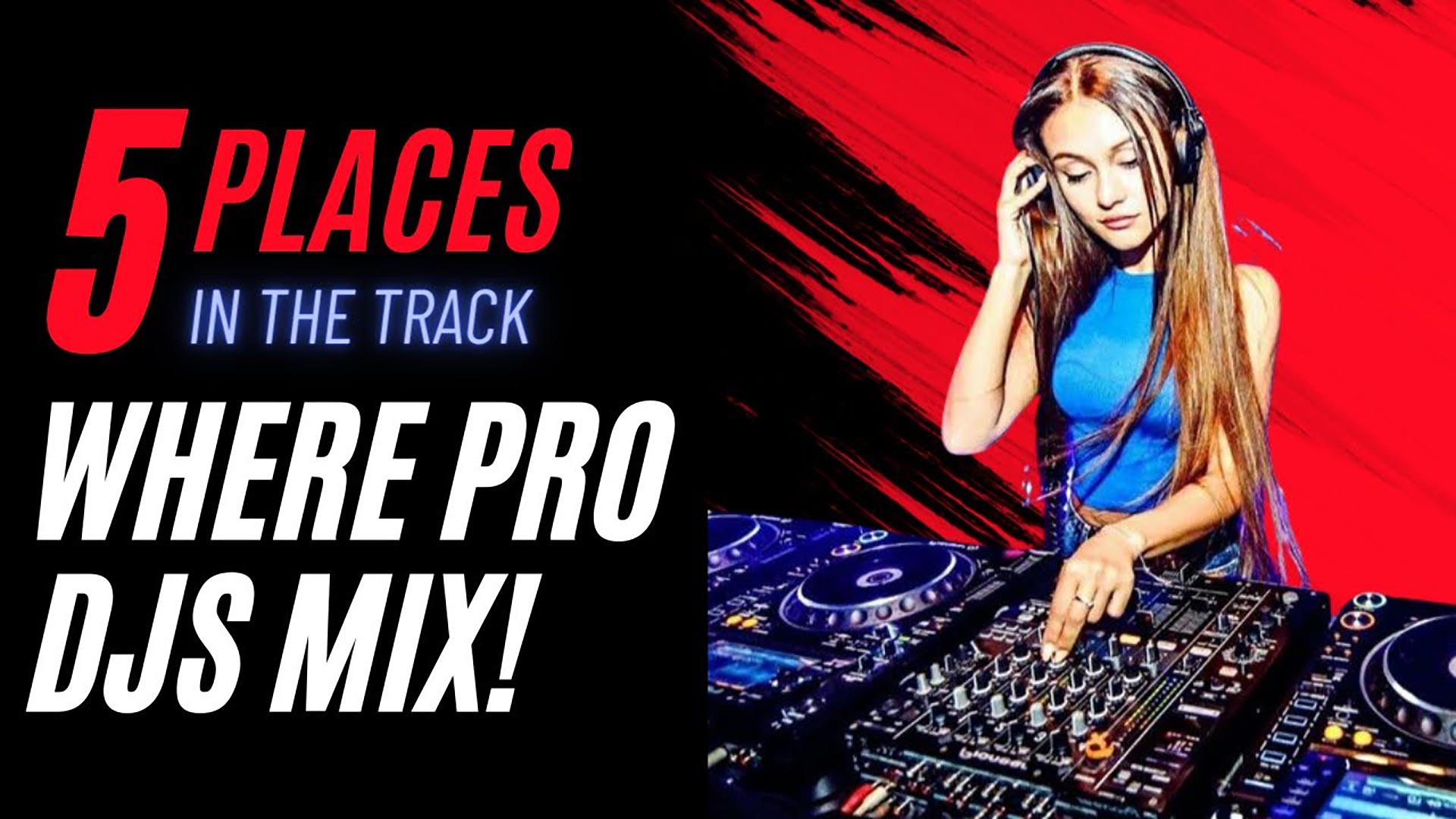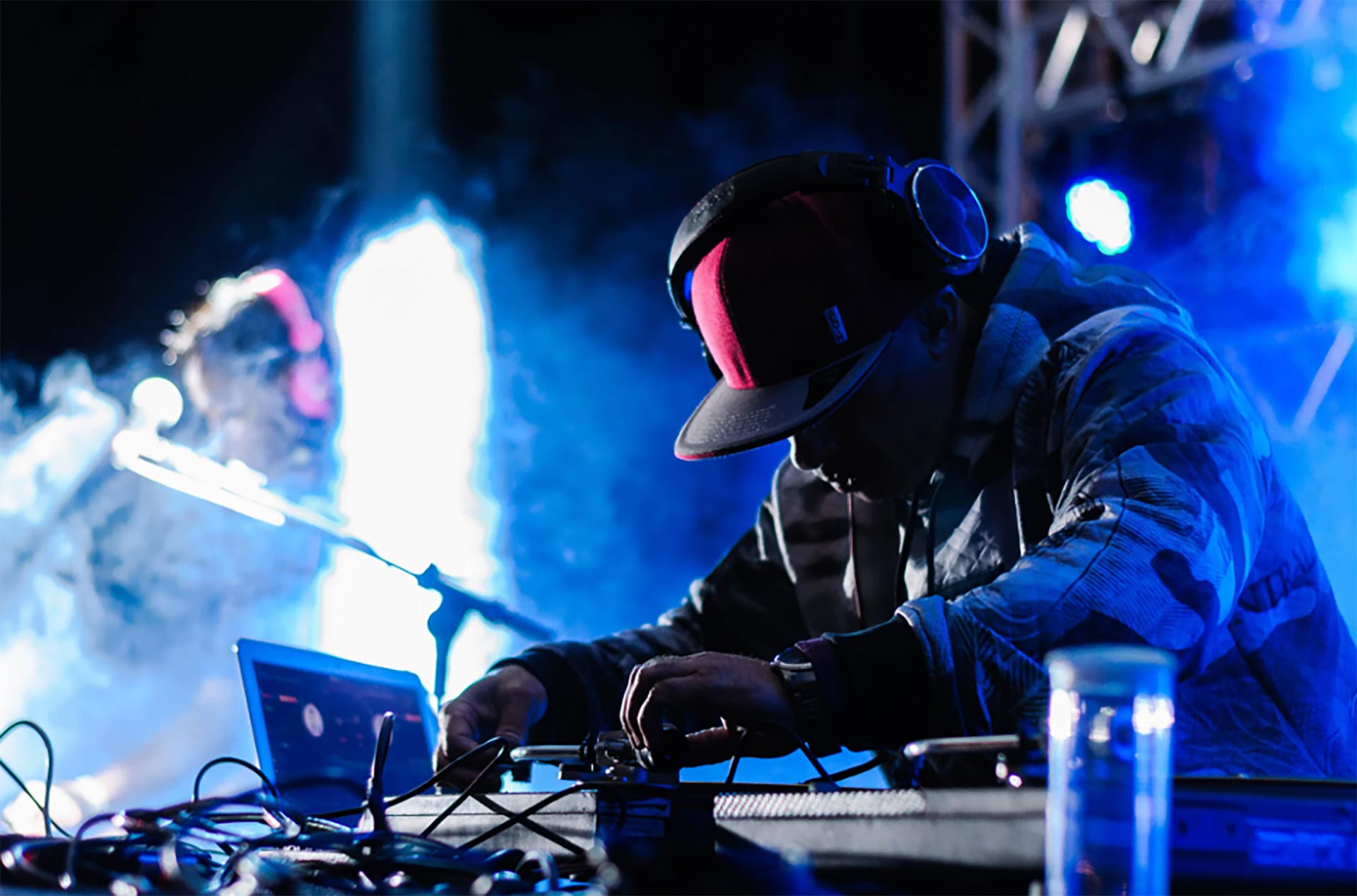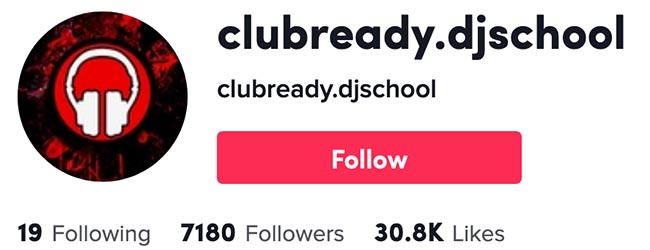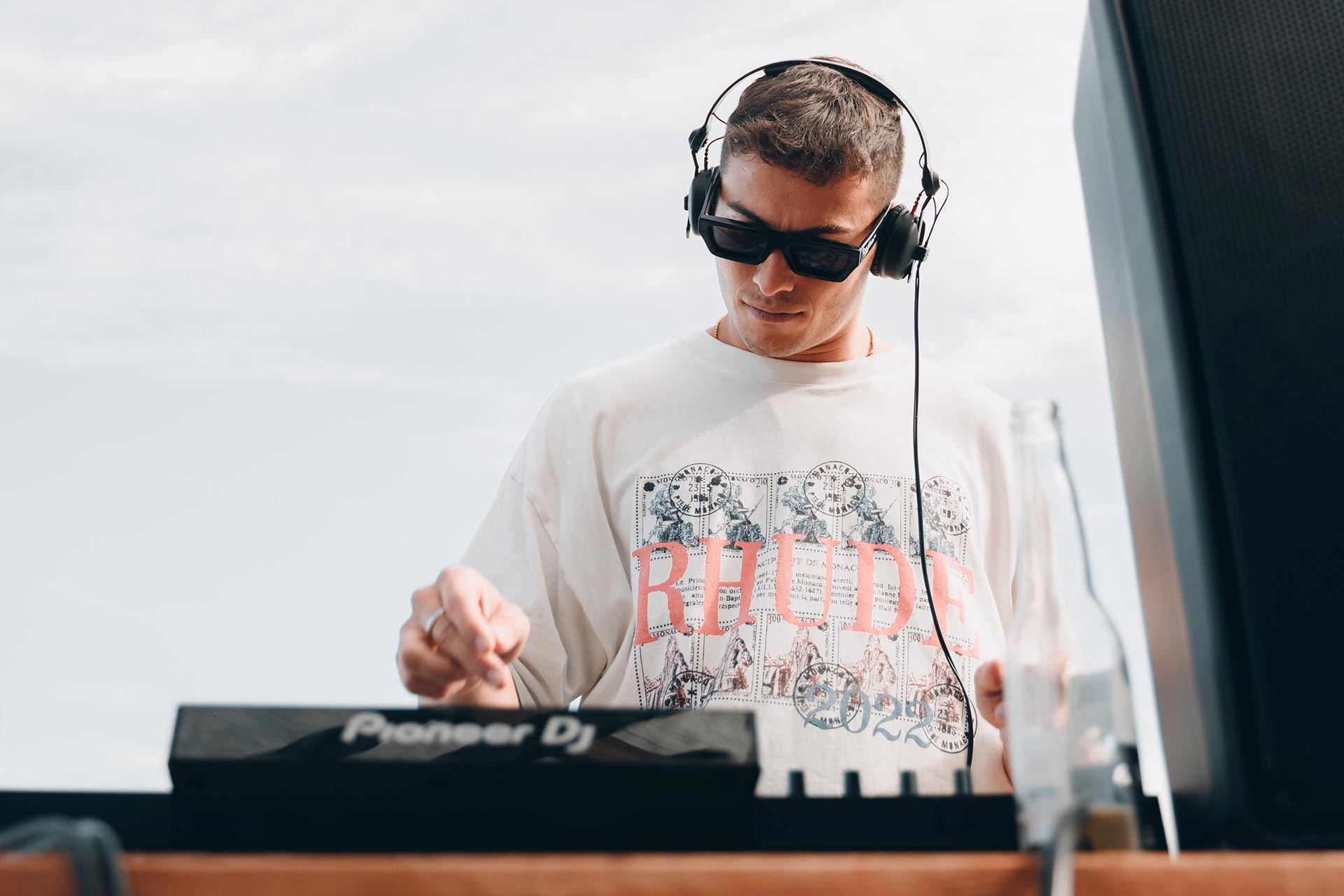
How To Craft The Ultimate DJ Mix
- By Jade Story, March 2023
Introduction
As DJs, music is an essential part of our lives, and for many people, nothing compares to the feeling of a well-crafted DJ mix. Not only is it an amazing promotional tool to create or boost your current DJ career, it is also a means to form your identity and brand. Posting regular mixes acts as your audio business card in the DJ world, so knowing how to craft an excellent mix is a powerful tool for any DJ to have.
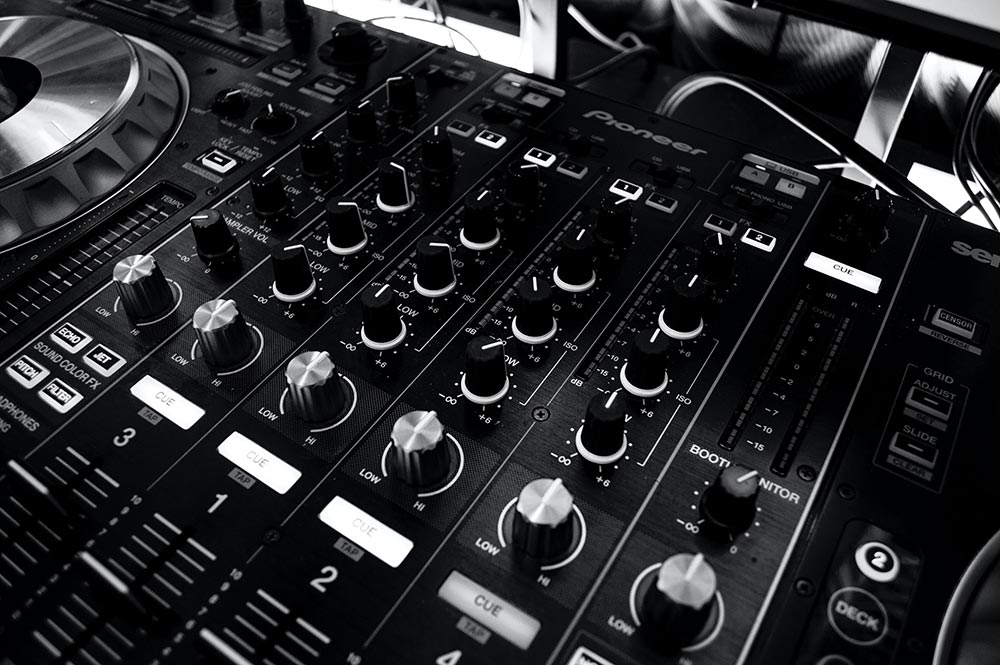
Creating the perfect DJ mix is an art that requires skill, planning, creativity, and attention to detail. In this article, we will provide you with practical tips and techniques for creating the perfect DJ mix that will keep your audience engaged and wanting more.
From the planning stages of defining your purpose and structuring your mix by selecting the right tracks, order, and target audience to understanding some of the technicalities behind those seamless mixes that have you listening to them on repeat. We will guide you through the process of creating a mix that showcases your creativity and personality, thus building your distinct sound over time and leaving a lasting impression on your audience.
Whether you are creating a mix to get gigs, build your personal brand as a DJ, or for your own pure enjoyment, read on to learn how to create the perfect DJ mix for your specific goals.
Why Post Your DJ Mix?
With the power of social media and the availability of various streaming services, having an online presence is a necessity for any DJ wanting to create a name for themselves.

Posting consistently great quality mixes gets your name out there and is a necessity in order to get bookings. It also keeps your name relevant, even if you are already being booked regularly.

Building up a fan base on social media is far more powerful than relying solely on your gigs to get noticed. When you have the combination of both, your presence as a DJ becomes a force to be reckoned with.

Planned vs. Unplanned Mixes?
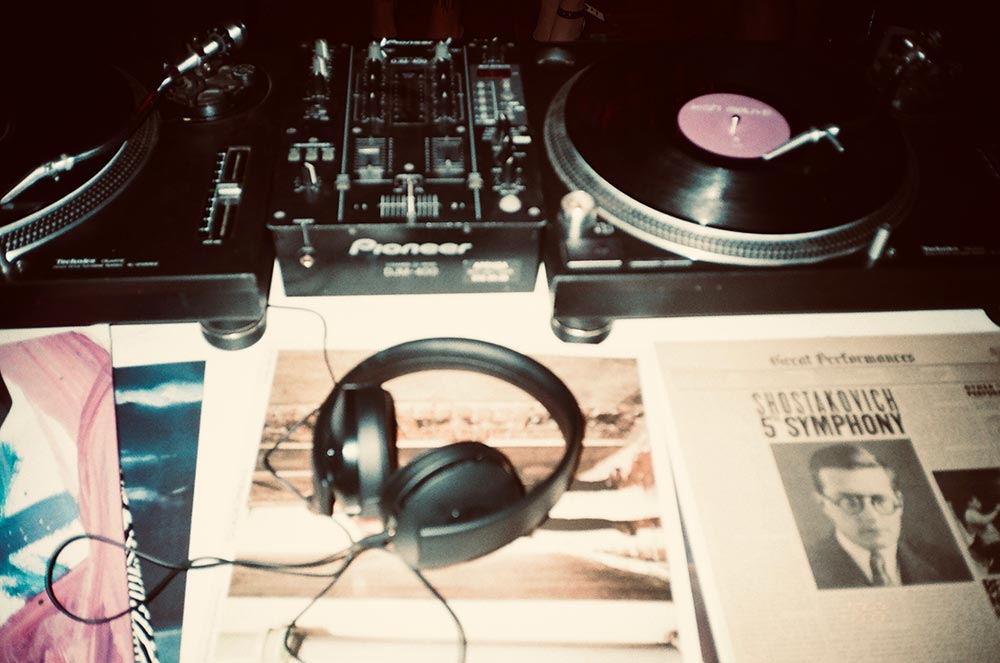
One important thing to understand is that there is a massive difference between performing live and creating a pre-recorded mix to post online.
A live set is based on reading the crowd, and the overall direction you take the set in will be determined by your audience's reactions in the moment. This is why pre-planning a live set won't always be your best option.
However, creating a mix to post online gives you full control of the journey you want to take your listeners on. This is where taking the time to plan something truly special, rather than making it up as you go along, will make a world of difference to your final mix.
Plan profusely and execute excellently.
Define Your Purpose:
Deciding on your purpose for creating the mix sets the scene for everything that follows.
How can you create excellence if you don't have a clear purpose in mind? Purpose helps to build a story and create something memorable. Sit down and ask yourself what you want to achieve with this mix:
What type of setting will it be played in? Who is your target audience? What genre is going to be played throughout?
And finally, will you be mixing using decks or Ableton Live?
- Are you making it to potentially get a gig at your favourite nightclub? If so, this immediately narrows down what genre and energy level you would be playing.
- Perhaps you're creating it as a self-promotion tool. In this case, you have the freedom to choose exactly what you want to play to showcase your taste in music and your mixing skills, ultimately drawing in and creating your audience as you go.
- If you love a particular genre of music and want your name as a DJ to become known for playing that, put all your effort into building great mixes around that niche.
- Decks vs. software such as Ableton Live? If you're releasing a mix in the hopes of getting live gigs, then of course it's better to mix live on any set of decks you can get your hands on, as this way you will be able to showcase your live mixing skills and won't be overselling yourself with a level of perfection that you won't be able to replicate in your live sets.
Ultimately, your purpose for creating the mix sets the scene for everything to follow, saving you the time and frustration that come with a lack of direction.
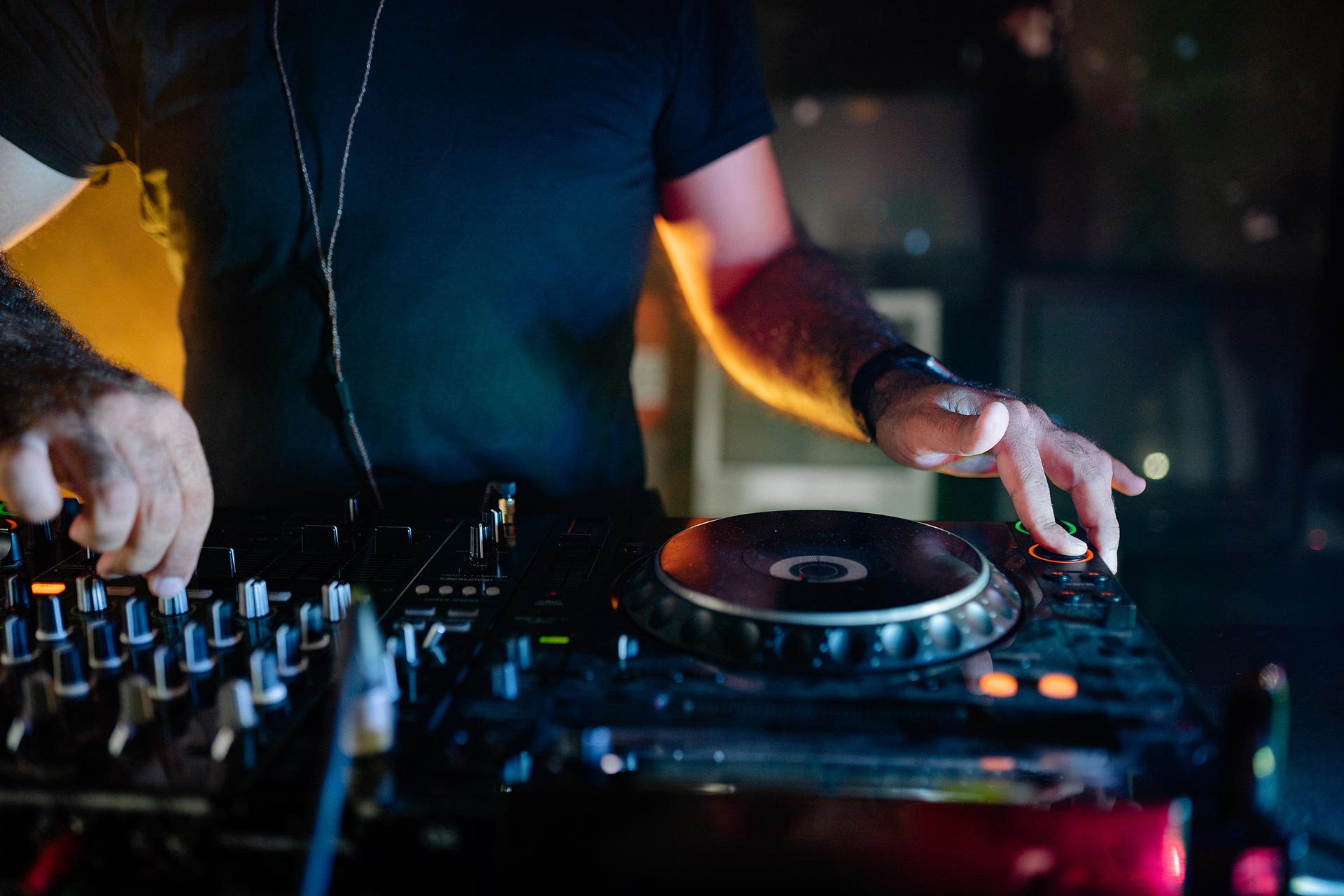
Song Selection:
Take the time to find tracks that are not necessarily the most popular at the time, but ones that people may not hear on a daily basis. Mixes are an excellent way of giving your listeners an education in whichever genre you love to play.
Being led by your ear is how you create a distinct sound, which is so important if you're trying to build your brand as a club DJ in particular. This is your opportunity to showcase what you love to play, to showcase your niche and attract the right fan base, with your listeners coming to trust that you will deliver a certain sound. If you try to please everyone, you will lose every time.
Developing a consistent sound does not preclude you from playing other styles, but it does help your brand as a DJ looking to make a name for yourself to be known for a specific style.
Finding tracks that are relatively unknown can leave a huge impact on your audience, as the unexpected is powerful. We all know nothing beats hearing a great track for the first time. Putting in that extra effort to look beyond the Beatport top 100, for example, will go a long way in separating you from the pack.
Once you have narrowed down a playlist, track order comes into play as the next important step in creating your mix. This is where tools such as crafting an energy diagram and using the guidelines for mixing in key can make this process a lot faster and more effective.
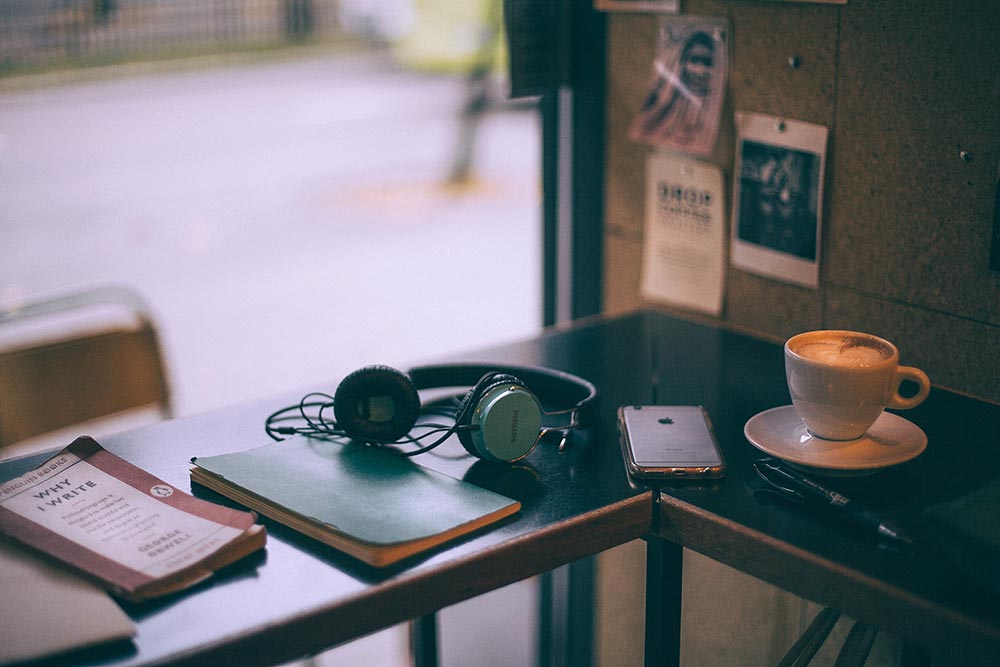
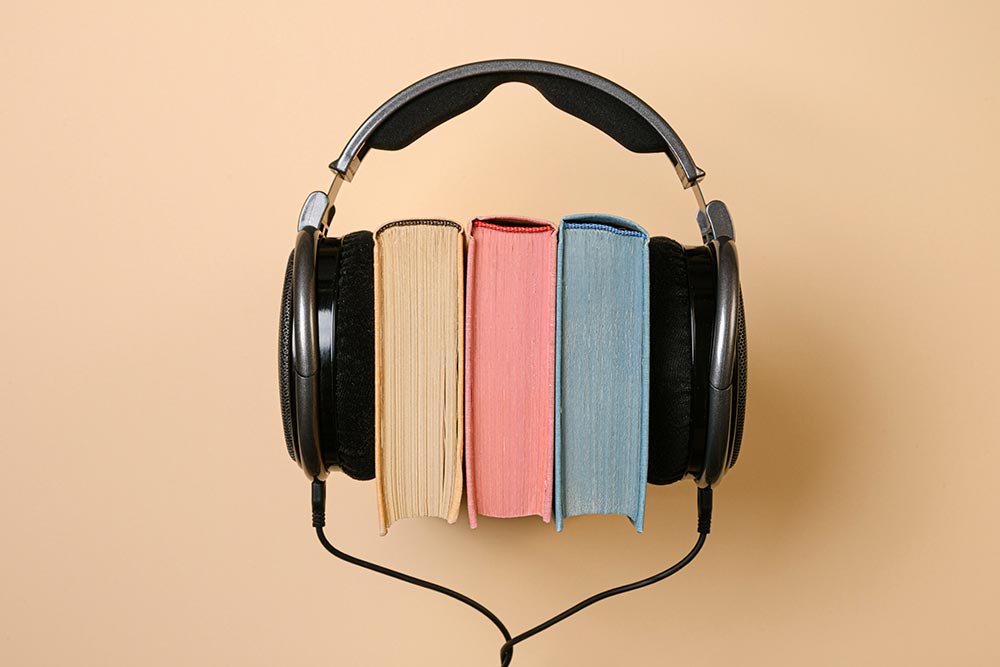
The Energy Diagram:
An excellent tool that both DJs and producers make use of to outline energy levels throughout a song or mix.
These are:
The Ramp: Rising from a low BPM to a high BPM, creating a steady build, and bringing your audience up to your biggest tracks. This creates an overall sense of something building and as the energy rises with each track, it keeps the listener intrigued as to what's coming next.
The Mountain: This peaks in the middle of the mix and then steadily ends on a similar energy level to the start of the mix.
The Wave: This keeps the audience on their toes as you take them through a series of peaks and valleys throughout the duration of the mix.
Decide on which method of leading the energy of your mix will work best for you and plan to execute it using this energy diagram as a guide.
Mixing In Key:
Mixing in key refers to the practice of matching the keys of your tracks when transitioning from one song to the next. In music theory, each key has a specific set of notes that create a particular mood or feeling. When DJs mix two tracks in the same key, the resulting sound is harmonious and creates a smooth, seamless transition between songs.
There are several reasons why mixing in key is important for DJs. First and foremost, it creates a more enjoyable listening experience for the audience. When tracks are mixed in key, the sound flows more smoothly and cohesively, allowing listeners to stay engaged with the music and dance without any jarring interruptions or awkward transitions. Essentially, making the tracks speak to one another rather than over one another.
Additionally, mixing in key can also help DJs build their sets and create a unique, cohesive sound. By selecting tracks that are all in the same or complementary keys, DJs can create a sense of musical continuity and build momentum throughout their set. This can help to keep your listeners engaged and energized throughout.
Overall, mixing in key is an incredibly helpful tool for DJs who want to create an enjoyable, engaging, and cohesive musical experience for their audience. However, remember, it's a tool, instead of a rule. Learn to also trust your ears, and don't fall into the trap of continuously sacrificing what would be the next best track in the mix for an average track simply because it's in key.
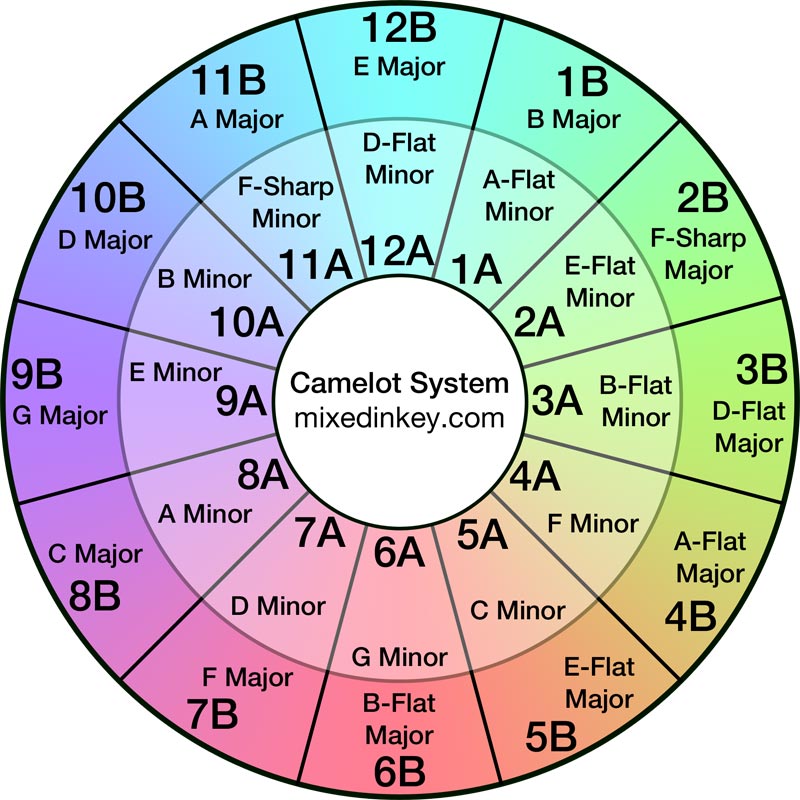
The Camelot wheel is an adapted version of the circle of fifths with a numerical value system, making it simple for those not used to working with key signatures. The numbers represent minor (A) or major (B) scales.
Using The T-Method:
Using the key of the current track, you can either mix in the exact same key or move one up or down. For example, if your current track is at 6A, you can mix in another track at 6A, or you could go for 6B, 5A, or 7A. For an energy boost effect, you can add +2 from the current Camelot value you're on. An energy boost from 6A would be mixing in a track at 8A.
Phrasing:
Understanding and using phrasing is one of the key facets of creating a mix that flows well. Phrasing is the practice of matching the beats and bars of two songs in a way that creates a seamless transition between them. This is an important technique used by DJs to maintain energy throughout a mix. Mixing in phrases helps you avoid any abrupt or disjointed transitions, which have the potential to ruin your overall mix.
Correct use of phrasing is the foundation of a good DJ mix and will take your mix from an amateur level to a professional level.
All music is made according to a certain structure, and phrases are what make up this structure. Every song is made up of beats, bars, and phrases. Phrases are made up of bars, and bars are made up of beats. The number of bars in a phrase differs between genres, however, within each genre, there will be an underlying structure that is most common. Most electronic dance music is made up of 16 or 32 bar phrases. These phrases form a rhythmic structure that your audience will naturally follow and expect to hear. When this is broken, it throws people off.
If you stick to the general rule of hitting play on your new track at the beginning of a phrase in your outgoing track, your mix will maintain a solid energy level throughout.
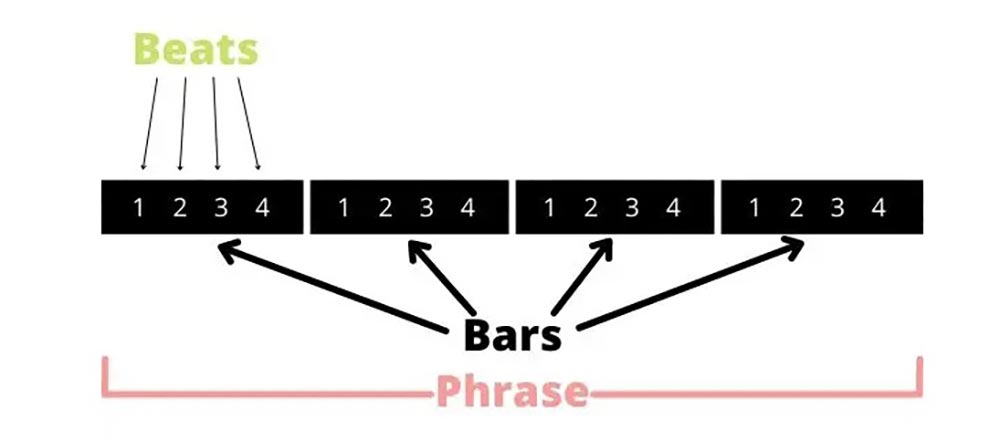
*This diagram clearly shows the 4 beats to a bar, with the accumulation of a particular number of bars forming a phrase.
Practice, Record and Listen:
The best way to tell what works and what doesn't is to record yourself every time you play. This way, you'll be able to hear where you've made mistakes, what mixing style works best for the genre you play, and which combinations of songs work well together.
This is a fun way of working out the best order for your final mix, as well as practicing keeping your levels in check so the recording is not distorted. This will also help you execute it perfectly in a few attempts instead of hundreds.

Get Creative:
Adding a hint of extra creativity can go a long way in giving your mix that added flair. Using Acapellas, loops, and filters (sparingly) can give you the opportunity to enhance certain aspects of your tracks and add tension to build ups or a beat to an otherwise empty breakdown.
Looping can also be used to tease in a new track or give you more time to slowly introduce a new track, enabling you to change up your transitions and keep things interesting by going between faster and more drawn-out mixing. Shortening the loop on a build up is another great way to build suspense while waiting for the next track to drop.
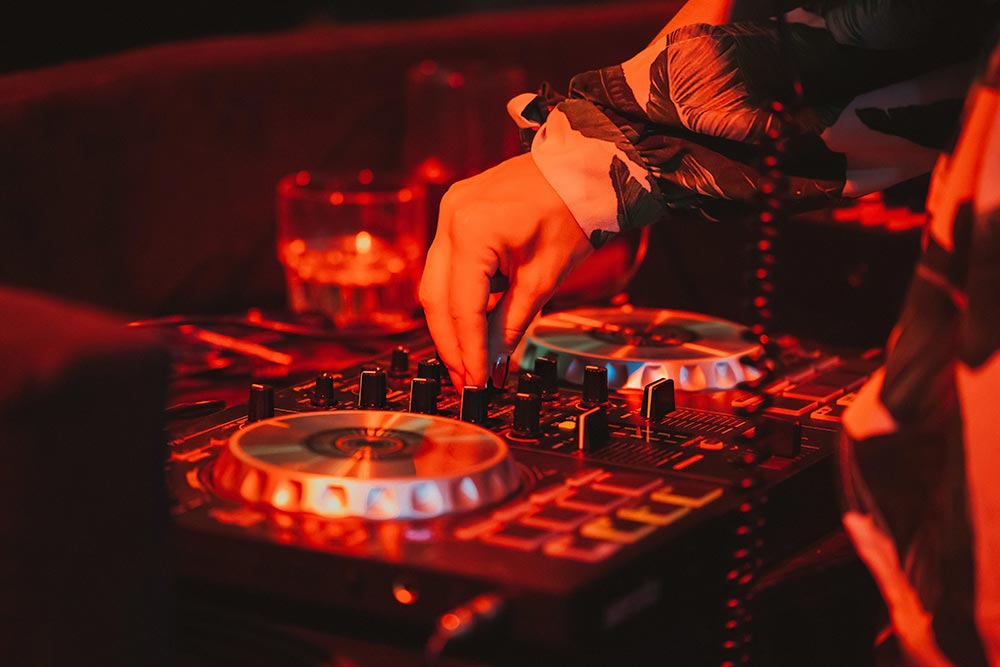
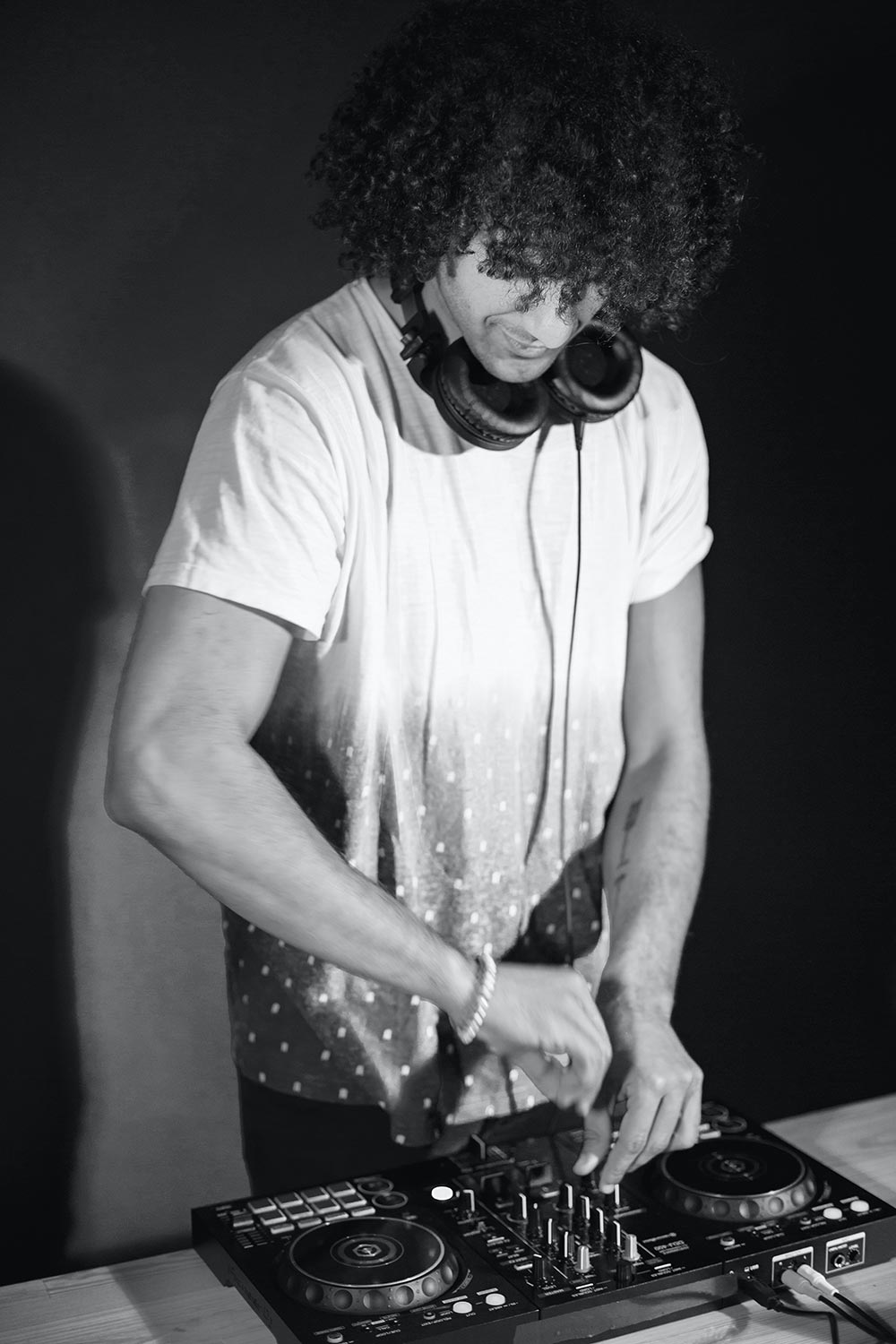
Sharing and Promoting:
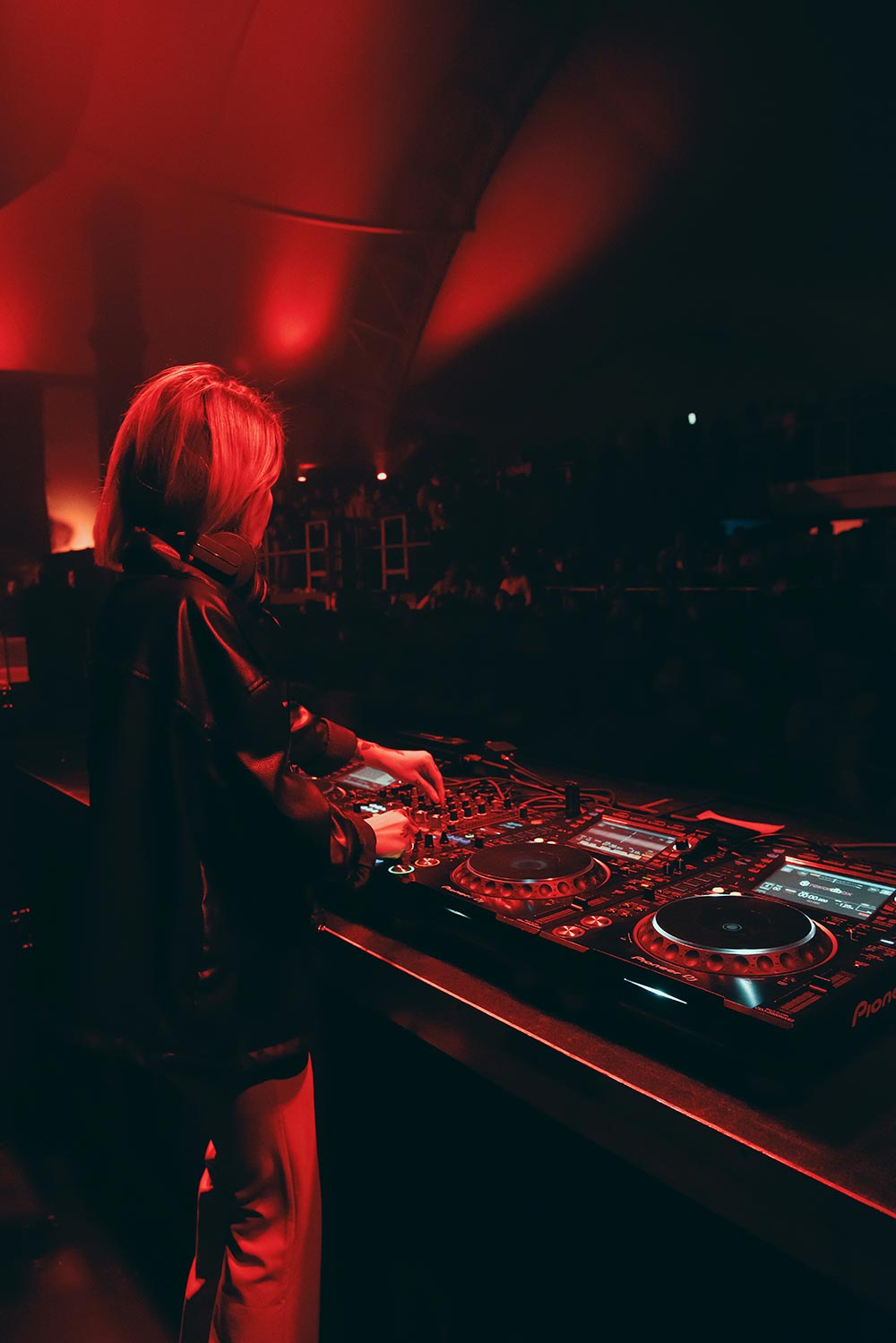
Once the hard work has been done and you've completed a mix you're proud of, you will want to put some thought into how to best leverage a variety of marketing channels and platforms, enabling you to get your music heard by a wider audience and build up your fan base over time.
Mixcloud and SoundCloud being the biggest platforms available, either of these is worth investing in if you're serious about building up your name as a DJ. These links can then be shared across all social media platforms. Live set recordings of your gigs are great to have for getting future gigs and building up your credibility. However, it is always great to have a well-planned and executed mix to your name too.
Make sure you have a great profile picture and a well-detailed bio; be sure to include hashtags on your mix to help the right audience find you; and lastly, put in some extra effort to include a great cover photo and name for your mix. This all helps add to the overall package.
Conclusion:
Overall, creating an excellent DJ mix takes a lot more than just hitting record and hoping for the best; it requires a combination of technical proficiency, creative vision, and a deep understanding of music and your audience. By mastering these key factors, you can create a mix that is engaging, entertaining, and unforgettable.
RELATED POSTS
In the first video at the top of the page I demonstrate different ways to mix Afro House, including where to mix, how long to play both tracks together, how to control energy through faster mixing, how to mix even when there's no obvious place to transition, and how to use looping to highlight certain parts of a track so you can extend your transitions smoothly. Let's do this!
Are you sick of some of your mixes sounding great and others sounding bad? In this video I'll give you 5 tips on where you can mix in your new track to make certain your transitions sound natural and effortless every single time. Let's start with the most common method, mixing in after the chorus.
Have you noticed the beats of your tracks drifting apart? Not having a visual reference to align the beats visually may affect your confidence behind the decks. Beatmatching allows you to match the beats by ear without looking at stacked waveforms. Even if you can align beats visually, beatmatching is an important tool to have in your toolbox because some venues do not have stacked waveform visuals.
Let me paint a picture. I was once out at a club and the music was getting repetitive and some people were leaving and more people were sitting down than dancing and all of a sudden the DJ teased in the vocal: hey boy hey girl, by chemical brothers.
Not yet part of the Club Ready Tribe? Sign up to become a student today and join the strongest DJ community in the world!!
DRUM ROLL... GET THE COMPLETE PACKAGE
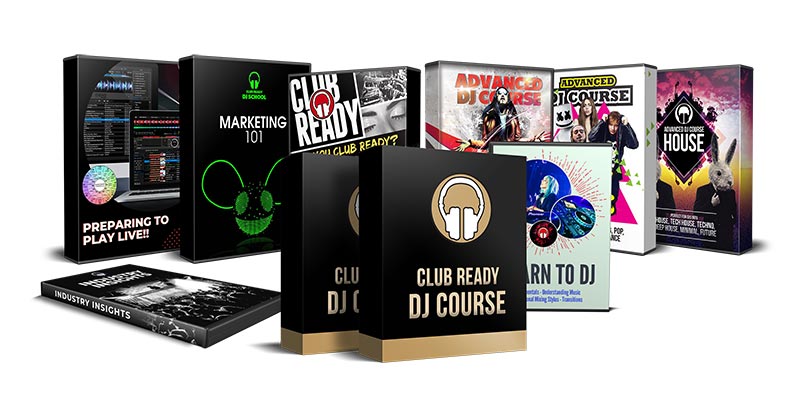
Buy all the courses and get over 60% off
For a limited time
CLUB READY DJ COURSE: Value: $295
ADVANCED PERFORMANCE PACK: Value: $395
CLUB PACK: Value: $195
ONE TIME BONUS VIDEOS: Value: $75
BONUS CONTROLLER TO CLUB MINI COURSE: Value: $95
FEEDBACK ON MIXES: Value: $45
MEMBER ACCESS TO CLUB READY TRIBE
DIRECT ACCESS TO ME
TOTAL VALUE: $1295
TOTAL VALUE OF COMPLETE PACKAGE: $1295
>> SALE PRICE: $175 Sale Ends Soon <<
YES! I WANT ALL THIS FOR ONLY $175And I want to be on time for the reduced price!

If you press the button and see the price went back to $1295 it means the promotion has ended and the program is back to its regular price.
This price is a ONE-TIME-ONLY payment and you get to keep the program FOR LIFE.

16 MINI DJ LESSONS FOR FREE!
Not sure where to start? In this mini series I answer many of the questions beginners have about learning to DJ.
CLUB READY DJ COURSE
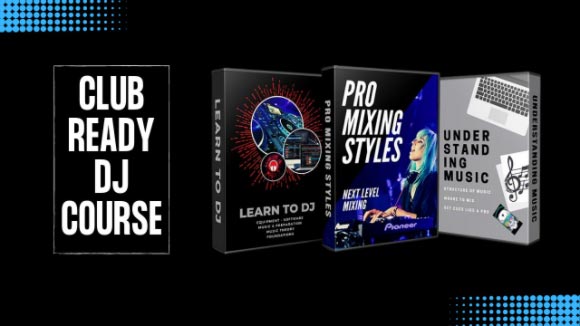 Usually
Usually ADVANCED PERFORMANCE PACK
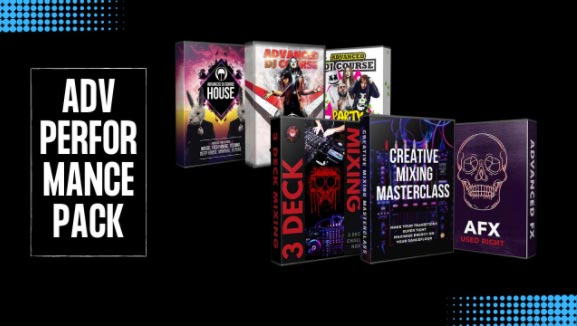 Usually
Usually CLUB PACK
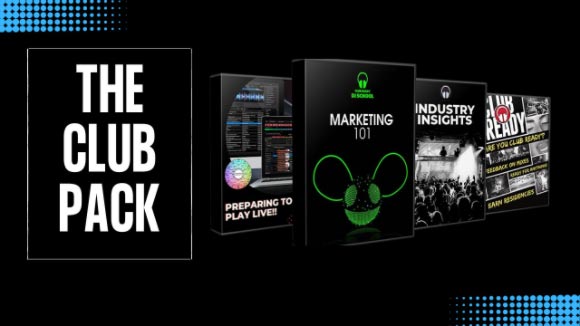 Usually
Usually THE COMPLETE PACKAGE
Get all of my courses for life!
 TOTAL VALUE:
TOTAL VALUE: 
